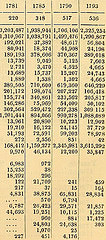In the future, when you eat out at a restaurant franchise in the United States, you may find some unpalatable figures printed next to the mouth-watering descriptions – the fat, sodium, cholesterol and calorie content of every choice on the menu. Will you still fancy that burger and fries if you know that it is going to “cost” you 850 calories as well as over half of your daily fat or sodium allowance?
With obesity a major health concern in the United States, maybe Americans need the truth about what they eat at restaurant franchises. After all, shouldn’t restaurant food have the same labelling standards as the food we cook in our own homes? Nutritional information on packaged foods is required under law by the Nutrition Labeling Education Act (NLEA) and much in the same way, the new Labeling Education and Nutrition Act (LEAN) will create a national standard for the restaurant industry. Up until now, various states have enforced their own standards, which has created an inconsistent, patchy and confusing set of local laws. The LEAN Act will provide a national standard through the United States and will compel restaurant franchises and other eaterie chains with at least twenty locations to display the calorie count of its food items. Chains would also be required to give customers additional nutritional information, including fat, sodium and cholesterol content. It is, however, expected that there will be some exceptions. For example, many restaurant franchises have self-serve buffets and, in such cases, the nutritional information disclosed is likely to be based upon an “average” serving. The nutritional content of multi-serve items (such as pizzas intended for two or more persons) would be on a per-serving basis.
Reaction to the new legislation has been mixed, but positive overall on the part of the restaurant franchises and the National Restaurant Association, the industry’s trade group and the National Franchise Association. In the end, the bill is a compromise between a stricter version backed by health industry organisations and one which the restaurant industry supported that would not have required calorie counts to be displayed. Most restaurant franchise chains have said that they are pleased with the compromise, which appears to be a workable solution, and are pleased that a national standard is to be implemented.
As for the consumers, they mostly appear to be in favour of the new legislation, with many people stating that seeing nutritional information in print next to the menu items will help them opt for healthier choices. However, others admit that it will make no difference to their menu choices.
Meanwhile, in the UK, the government has announced that it will trial calorie counts for food sold in takeaways, restaurant franchises and canteens. It is seeking volunteer companies to display calorie content listings and believes that the rest of the industry will quickly follow suit once a standardised guide is agreed. However, unlike the American scheme, it is not believed that the British plan will be backed by legislation.
With obesity growing at an alarming rate on both sides of the “Pond”, maybe these standards will encourage the restaurant franchise industry to develop healthier dishes.
restaurant franchise report

